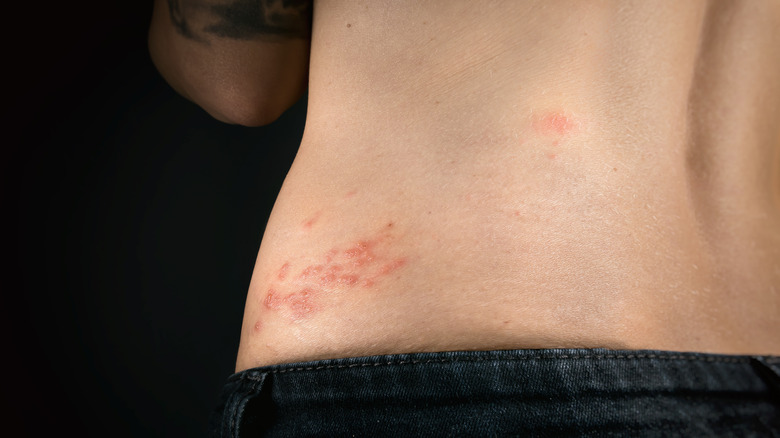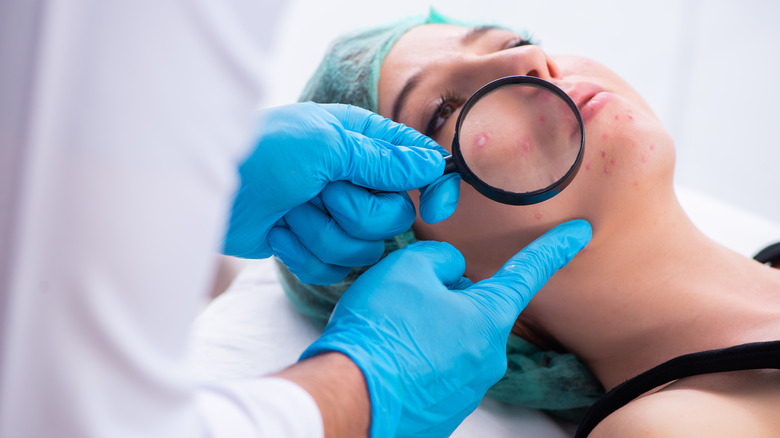If This Happens To Your Skin, It Could Be A Sign Of Shingles
Contrary to popular belief, shingles isn't exclusive to people older adults, per Cedars-Sinai. In fact, shingles cases among younger people have been on the rise in recent years, with research showing the number of shingles cases between the late 1940s to early 2000s having climbed four times higher in those under 50 years of age (via Cedars-Sinai).
Shingles is a condition caused by the reactivation of the varicella-zoster virus, per the Mayo Clinic. This same virus is also responsible for chickenpox. After having contracted chickenpox, the virus remains dormant within the body's nervous system, residing near the brain and spinal cord. Upon reactivation, it manifests in the form of a painful rash, often localized to one side of the body. Commonly seen on areas of the face and torso, this painful rash outbreak is known as shingles.
Shingles often progresses in stages, with symptoms intensifying in subsequent days (via Mayo Clinic). Because symptoms can include itching, tingling, and the emergence of fluid-filled blisters, amongst others, it's important to know what the very first sign of shingles often is.
Pain is the first sign of shingles
Pain is usually the first symptom in the emergence of shingles (via Mayo Clinic). Primary care physician at Cedars-Sinai Dr. Ara Thomassian compares it to that of a cold sore, stating, "It can seem like nerve pain, and you may feel numbness or tingling" (via Cedars-Sinai). For some, the pain can be severe, feeling much like a burning sensation.
In the following days comes the development of a red rash on one side of the body (via Mayo Clinic). While some people may not develop a rash at all, for most, it's accompanied by a strip of fluid-filled blisters. It's during this stage when the blisters are still wet that you are contagious to others who are either not vaccinated against or who never contracted chickenpox. In time, the blisters will dry out and crust over, but one should avoid people particularly susceptible to viral infection, such as pregnant individuals or those who are immunocompromised, according to Mayo Clinic.
Though not considered life-threatening, shingles can cause complications, particularly in older adults (via Mayo Clinic). Therefore, you'll want to visit a doctor as soon as you begin to develop symptoms. It is particularly important to seek medical care if shingles develops along the face. Dr. Thomassian explains, "[Lesions] on the face, especially if they are near the eye or nose, can put your vision at risk. These [lesions] can affect your optic nerve and can potentially cause blindness, so we take this very seriously," per Cedars-Sinai.

